The Smack Dabs

7-26-2025 (Ballroom)
The Smack Dabs specialize in good-time Swing Blues music from the 1930s, featuring the songs of Tampa Red, Big Bill Broonzy, The Harlem Hamfats, and many others.
This delightful and timeless genre features a rich variety of musical styles, ranging from mournful blues to joyful celebrations, setting the stage for incredible solo and group improvisations and delighting audiences and dancers alike.
The 1930s were halcyon days for Swing music, but not just for the likes of big bands like Duke Ellington, Benny Goodman, Jimmy Lunceford, and the Dorsey Brothers. There were literally hundreds of small Swing combos from trios to octets, each with its own unique take on the music that dominated the market during the height of the Great Depression. The list of artists who led small combos include Tiny Grimes, Slim Galliard, Billie Holiday, and Fats Waller. In addition to these groups, several important vocal harmony groups were also active on the scene, including the Cats and the Fiddle, the Mills Brothers, the Ink Spots, and the Spirits of Rhythm. Evolving out of New Orleans jazz and ragtime stylings, Swing music was fueled by the improvisational and rhythmic innovations of soloists like Louis Armstrong and Coleman Hawkins. It remains primarily dance music.
Ironically, Benny Goodman, the White bandleader dubbed by the media as the “King of Swing,” couldn’t have been further from the roots of the music he played. Most of the musicians who pioneered what we call “Swing” recorded “race records,” recordings primarily marketed to and for Black Americans. Yet, this vibrant, joyous, celebratory, bawdy, and irreverent music clearly made its way into mainstream American culture and featured some of the first examples of racial integration. To his credit, Goodman was the first to integrate his band for general audiences, adding guitar great Charlie Christian among others to his roster. At the time, vaudeville, Tin Pan Alley, Jazz, and Blues idioms intermingled with Swing to create interesting and novel incarnations.
The Smack Dabs’ sound is influenced by a mélange of musical styles. The band gets its instrumental configuration from Tampa Red and his Chicago Five, improvisational vitality from the small Black Swing combo, and swagger from risqué Blues. The Smack Dabs celebrate the bawdy, joyous, inclusive character of this music and is dedicated to honoring those who made it great.
“joyous” “rowdy yet disciplined” “jubilant sound of surprise” “danceable jazz” - Daniel Gewertz - The ArtsFuse
VIDEO
The Smack Dabs specialize in good-time Swing Blues music from the 1930s, featuring the songs of Tampa Red, Big Bill Broonzy, The Harlem Hamfats, and many others.
This delightful and timeless genre features a rich variety of musical styles, ranging from mournful blues to joyful celebrations, setting the stage for incredible solo and group improvisations and delighting audiences and dancers alike.
The 1930s were halcyon days for Swing music, but not just for the likes of big bands like Duke Ellington, Benny Goodman, Jimmy Lunceford, and the Dorsey Brothers. There were literally hundreds of small Swing combos from trios to octets, each with its own unique take on the music that dominated the market during the height of the Great Depression. The list of artists who led small combos include Tiny Grimes, Slim Galliard, Billie Holiday, and Fats Waller. In addition to these groups, several important vocal harmony groups were also active on the scene, including the Cats and the Fiddle, the Mills Brothers, the Ink Spots, and the Spirits of Rhythm. Evolving out of New Orleans jazz and ragtime stylings, Swing music was fueled by the improvisational and rhythmic innovations of soloists like Louis Armstrong and Coleman Hawkins. It remains primarily dance music.
Ironically, Benny Goodman, the White bandleader dubbed by the media as the “King of Swing,” couldn’t have been further from the roots of the music he played. Most of the musicians who pioneered what we call “Swing” recorded “race records,” recordings primarily marketed to and for Black Americans. Yet, this vibrant, joyous, celebratory, bawdy, and irreverent music clearly made its way into mainstream American culture and featured some of the first examples of racial integration. To his credit, Goodman was the first to integrate his band for general audiences, adding guitar great Charlie Christian among others to his roster. At the time, vaudeville, Tin Pan Alley, Jazz, and Blues idioms intermingled with Swing to create interesting and novel incarnations.
The Smack Dabs’ sound is influenced by a mélange of musical styles. The band gets its instrumental configuration from Tampa Red and his Chicago Five, improvisational vitality from the small Black Swing combo, and swagger from risqué Blues. The Smack Dabs celebrate the bawdy, joyous, inclusive character of this music and is dedicated to honoring those who made it great.
“joyous” “rowdy yet disciplined” “jubilant sound of surprise” “danceable jazz” - Daniel Gewertz - The ArtsFuse
VIDEO






